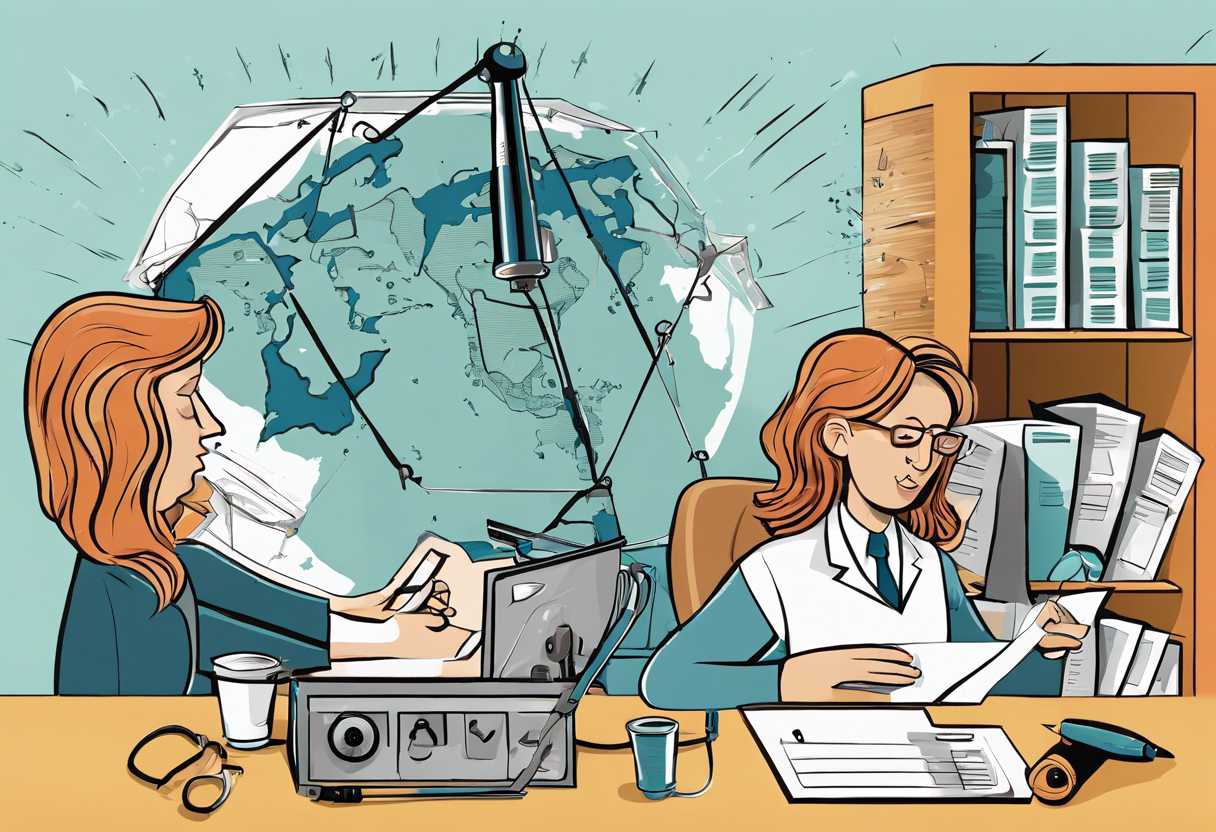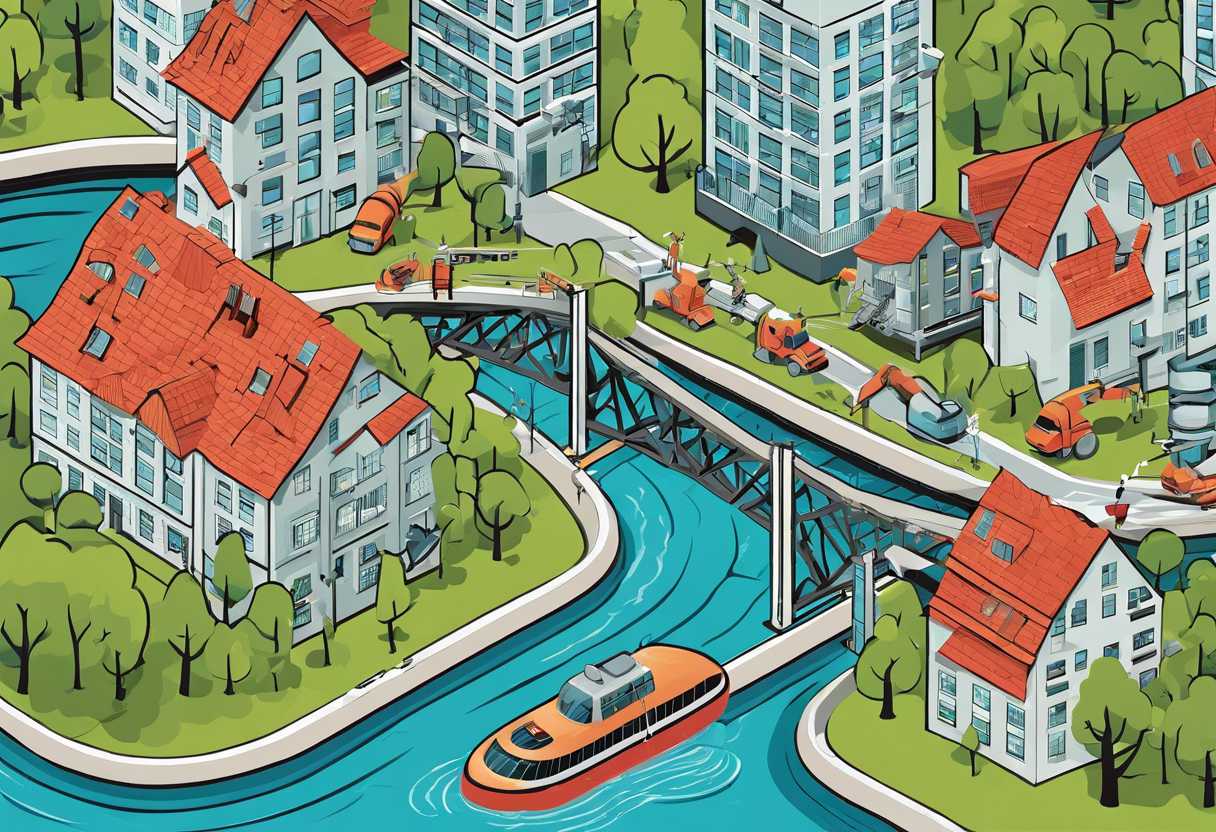Natural hazards such as earthquakes, floods, hurricanes, and wildfires can have devastating effects on communities, causing loss of life, destruction of property, and disruption of essential services. Understanding the impact of these natural hazards on communities is crucial in developing effective disaster risk reduction strategies. By implementing preparedness and response strategies, building resilient infrastructure, engaging communities, and leveraging technology and innovation, we can reduce disaster risks and minimize the impact of natural hazards. In this blog post, we will explore these key areas and discuss how they can contribute to reducing disaster risks from natural hazards.
Understanding the Impact of Natural Hazards on Communities
The Devastating Effects of Natural Hazards
Natural hazards such as earthquakes, hurricanes, floods, and wildfires can have a profound impact on communities. These events can result in loss of life, destruction of infrastructure, displacement of residents, and long-term economic and social consequences. Understanding the specific effects of each type of natural hazard is crucial for effective disaster preparedness and response.
Community Vulnerability and Resilience
Communities vary in their vulnerability to natural hazards based on factors such as location, infrastructure, and socioeconomic status. Vulnerable communities may experience more severe impacts and have fewer resources to recover from disasters. On the other hand, resilient communities have the capacity to withstand and bounce back from natural hazards. Building resilience through measures such as improved infrastructure, early warning systems, and community preparedness can mitigate the impact of natural hazards.
The Role of Government and NGOs
Government agencies and non-governmental organizations play a critical role in mitigating the impact of natural hazards on communities. This includes implementing building codes and land use regulations, providing disaster relief and recovery assistance, and conducting public education and outreach. Collaboration between government entities, NGOs, and local communities is essential for effective disaster risk reduction and management.

Implementing Effective Preparedness and Response Strategies
The Importance of Preparedness and Response
Effective preparedness and response strategies are crucial for mitigating the impact of emergencies and disasters. By proactively planning and implementing these strategies, organizations can minimize the potential damage and ensure a swift and coordinated response when crises occur. This not only protects the safety and well-being of individuals but also safeguards the continuity of operations and minimizes financial losses.
Key Components of Preparedness and Response Strategies
When developing preparedness and response strategies, it’s essential to consider several key components. First, organizations should conduct a thorough risk assessment to identify potential hazards and vulnerabilities. This information can then be used to develop comprehensive emergency plans and protocols, including evacuation procedures, communication strategies, and resource allocation. Additionally, training and drills are essential to ensure that all personnel are prepared to execute these plans effectively when needed.
- Conducting risk assessments to identify hazards and vulnerabilities
- Developing comprehensive emergency plans and protocols
- Implementing training and drills for personnel
Best Practices for Implementing Preparedness and Response Strategies
Implementing effective preparedness and response strategies requires a proactive and holistic approach. Organizations should prioritize communication and coordination among all stakeholders, including employees, emergency responders, and community partners. Additionally, leveraging technology and data analytics can enhance situational awareness and decision-making during emergencies. Regular reviews and updates of preparedness plans are also critical to ensure they remain relevant and effective in the face of evolving threats.
- Prioritize communication and coordination among stakeholders
- Leverage technology and data analytics for enhanced situational awareness
- Regularly review and update preparedness plans

Building Resilient Infrastructure to Mitigate Disaster Risks
The Importance of Resilient Infrastructure
Resilient infrastructure is crucial for mitigating disaster risks and ensuring the safety and well-being of communities. It involves designing and constructing infrastructure that can withstand natural disasters such as earthquakes, floods, and hurricanes. By investing in resilient infrastructure, we can minimize the impact of disasters, reduce economic losses, and save lives.
Key Components of Resilient Infrastructure
Resilient infrastructure encompasses a range of features and measures that contribute to its ability to withstand disasters. This includes incorporating flexible building materials, implementing effective drainage systems, and designing structures to withstand high winds and seismic activity. Additionally, the use of advanced technology and early warning systems can help to detect and respond to potential disasters, further enhancing the resilience of infrastructure.
The Role of Government and Private Sector in Building Resilient Infrastructure
Building resilient infrastructure requires collaboration between the government and the private sector. Governments play a crucial role in establishing and enforcing building codes and regulations that prioritize resilience. They also provide funding and incentives for infrastructure projects that incorporate resilient design principles. On the other hand, the private sector, including construction companies and developers, can contribute by adopting resilient building practices and investing in innovative technologies that enhance infrastructure resilience.
Engaging Communities in Disaster Risk Reduction Efforts
The Importance of Community Engagement
Community engagement is a crucial aspect of disaster risk reduction efforts. When communities are actively involved in planning and implementing risk reduction measures, the likelihood of successful outcomes increases. Engaging with local residents, community leaders, and organizations allows for a more comprehensive understanding of the specific risks and vulnerabilities present in a given area. This insight is invaluable when developing and implementing effective disaster risk reduction strategies.
Effective Strategies for Community Engagement
One effective strategy for engaging communities in disaster risk reduction efforts is to establish community-based disaster risk management committees. These committees can serve as a platform for collaboration and decision-making, allowing community members to actively participate in the planning and implementation of risk reduction measures. Additionally, conducting regular community meetings and workshops to raise awareness about disaster risks and preparedness can help foster a sense of ownership and responsibility among residents.
Another important aspect of community engagement is the inclusion of traditional knowledge and practices. Local communities often possess valuable traditional knowledge and practices that have been passed down through generations and can be instrumental in developing effective risk reduction strategies. By incorporating these traditional practices into modern risk reduction efforts, communities can leverage their existing resources and expertise.
Measuring the Impact of Community Engagement
Measuring the impact of community engagement in disaster risk reduction efforts is essential for evaluating the effectiveness of the strategies implemented. One way to measure impact is through the use of indicators such as the number of community members trained in disaster preparedness, the percentage of households with emergency plans in place, and the reduction in disaster-related losses over time. By tracking these indicators, organizations and authorities can assess the progress and effectiveness of their community engagement efforts and make adjustments as needed.
Leveraging Technology and Innovation for Disaster Risk Management
The Role of Technology in Disaster Risk Management
Technology plays a crucial role in disaster risk management by providing tools and solutions to help predict, prepare for, and respond to disasters. Remote sensing technologies, such as satellites and drones, enable the collection of real-time data on disaster events, helping authorities to assess the extent of damage and plan effective response strategies. Geographic Information Systems (GIS) are also used to map and analyze risk areas, allowing for better planning and resource allocation.
Innovative Solutions for Disaster Risk Reduction
Advancements in technology have led to the development of innovative solutions for disaster risk reduction. Early warning systems use sensors and data analytics to detect potential disasters, providing timely alerts to at-risk communities. Smart infrastructure equipped with sensors and monitoring devices can withstand natural hazards and minimize damage, while resilient building materials offer improved protection against disasters such as earthquakes and hurricanes.
The Future of Disaster Risk Management
The future of disaster risk management lies in the continued integration of technology and innovation. Artificial intelligence and machine learning are being used to analyze vast amounts of data and improve predictive models for disaster events. Blockchain technology is also being explored for its potential to enhance transparency and efficiency in disaster response and recovery efforts. As technology continues to advance, the possibilities for leveraging it in disaster risk management are endless.
Conclusion
Reducing disaster risks from natural hazards is a critical endeavor that requires a multi-faceted approach. By understanding the impact of natural hazards on communities, implementing effective preparedness and response strategies, building resilient infrastructure, engaging communities, and leveraging technology and innovation, we can work towards a safer and more secure future.
It is essential for governments, organizations, and individuals to prioritize disaster risk reduction efforts and invest in proactive measures to mitigate the impact of natural hazards. By working together and taking proactive steps, we can build more resilient communities and reduce the devastating effects of disasters.
As we move forward, let us continue to prioritize disaster risk reduction efforts and work towards building a more resilient and secure future for all. Together, we can make a difference in reducing disaster risks from natural hazards and creating a safer world for generations to come.
Thank you for reading and joining us in this important conversation. Let’s continue to work together towards a safer and more resilient future.

